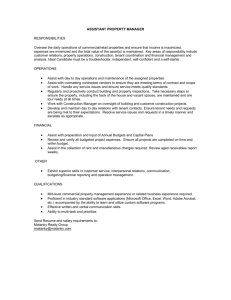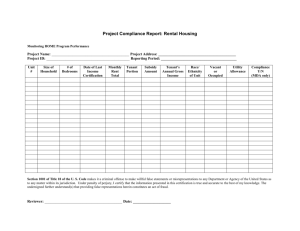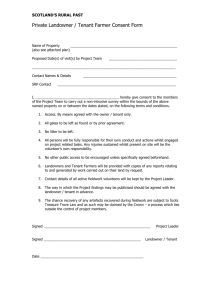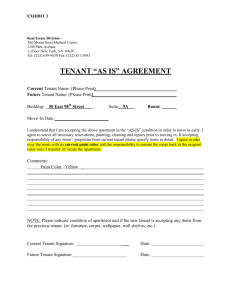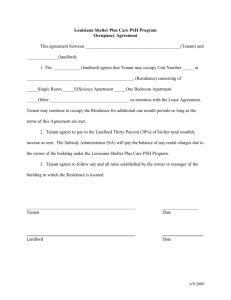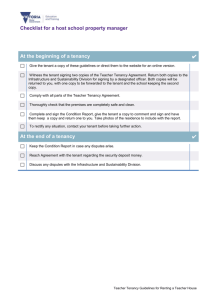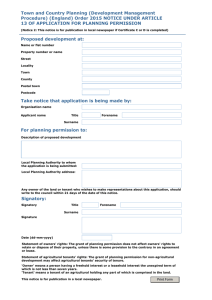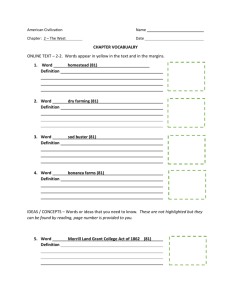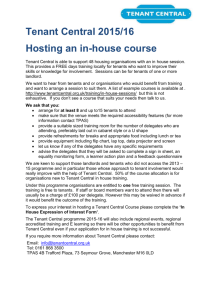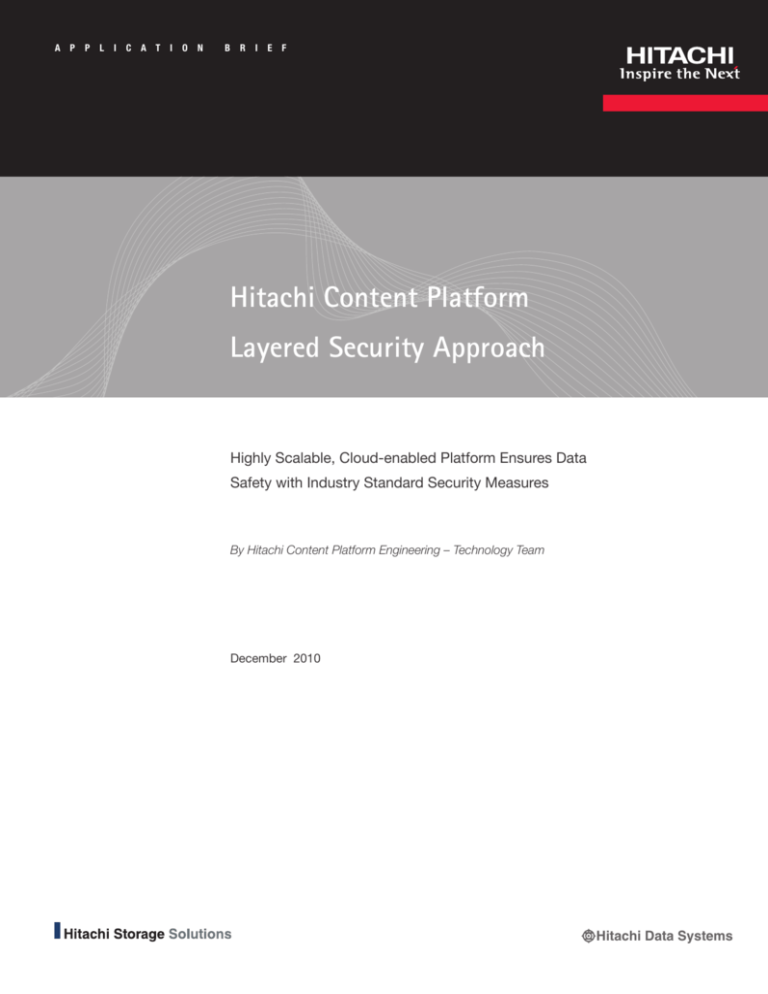
A
P
P
L
I
C A T
I
O
N
B
R
I
E
F
Hitachi ContentDolore
Aciduisismodo
Platform
Eolore
Dionseq Uatummy Odolorem Vel
Layered Security Approach
Highly Scalable, Cloud-enabled Platform Ensures Data
Safety with Industry Standard Security Measures
By Hitachi Content Platform Engineering – Technology Team
December 2010
Hitachi Data Systems
2
Table of Contents
Executive Summary
3
Introduction
4
Summary
4
About Hitachi Content Platform Security
4
Authentication
4
Management User Interface
4
Data Access
5
Remote Authentication 5
Legacy Protocols
5
Console User
6
Remote Service Login
6
Internode Login
6
Authorization and Access 6
System Administration
6
Tenant Administration
7
Data Access Permissions
8
Authenticated Namespace Data Access
9
Default Namespace Data Access
9
Console Access
10
Service Access
10
Encryption 10
Data at Rest Encryption 10
Data Transmission Encryption
10
Auditing and Monitoring 11
Hitachi Content Platform Security Best Practices
12
Physical Security
12
System Management
12
Tenant Management
12
Service Management
13
Conclusion
13
3
Executive Summary
Hitachi Content Platform (HCP) provides strong support for a full set of industry standard security
measures. As a distributed object store, HCP is designed to provide a highly scalable, secure,
cloud-enabled object repository platform capable of supporting multiple simultaneous applications.
With layered security, the platform restricts unauthorized access to data to ensure its safety. This
white paper summarizes the major areas of security in an HCP system and how they apply to object
storage, access protocols, system administration and operation of the repository.
4
Introduction
Summary
Security is an important feature of your enterprise information infrastructure. Hitachi Content
Platform provides multiple layers of features designed to safeguard and secure the data entrusted to it.
The primary purpose of this white paper is to address questions, such as:
■■How
does HCP prevent unauthorized management and configuration activity?
■■How
does HCP prevent unauthorized access to data?
■■What
options do I have for segmenting management and data access within HCP?
■■What
practices do I need to employ to minimize threats of unauthorized access?
About Hitachi Content Platform Security
HCP is a distributed object store designed to provide a highly scalable, secure, cloud-enabled
object repository platform capable of supporting multiple simultaneous applications. HCP takes a
layered approach to security, ensuring the safety of data while restricting unauthorized access to it.
HCP also includes several security features not found in other commercial object stores.
HCP supports multiple tenants: virtual object stores with independent management and data
access. Each tenant can host multiple namespaces that segregate the data from different
applications and user communities.
Authentication
Access to Hitachi Content Platform is segregated by user function. There are administrative
accounts for managing the whole repository. Each tenant is granted a private set of administrative
accounts. Tenant administrators establish data access accounts, which allow access to data within
the namespaces of a tenant.
Management User Interface
The HCP Repository is managed at a browser-based System Management Console. Users of the
System Management Console authenticate for access with a username and password. HCP is
delivered with an initial management account with a default username and password. When this
account is first used, the user is forced to change the password.
Tenants are created at the System Management Console. Once created, each tenant is managed
at a browser-based Tenant Management Console. Users of each Tenant Management Console
authenticate for access with a username and password. An initial administrative user account
is created for each tenant when the tenant is created. The administrator who creates the tenant
provides an initial password for this account. When the account is first used, the user is forced to
change the password. Once changed, users of the System Management Console do not have
access to the password or any of the tenant administrative accounts. The System Management
5
Console can, however, be used to reset certain tenant administrator passwords. The discussion of
administrator roles later in this document talks more about this.
Data Access
Access to an HCP namespace to read or write data is done via HTTP. Tenant administrators grant
access to namespaces within the tenant by creating data access accounts for the tenant and
specifying the namespaces that each data access user can access. Each account has a username
and password. Each HTTP request must present a cookie, which provides a valid data access
account username and password.
Remote Authentication
By default, administrative accounts for the System Management Console and Tenant Management
Consoles are authenticated against a locally managed username and password database. The
System Management Console can be used to establish an external RADIUS server for use in
authenticating HCP administrative accounts. Once an external RADIUS server is established, local or
remote authentication can be selected on a per-user basis.
Legacy Protocols
The multitenant architecture in HCP is a recent feature. Earlier versions of HCP provided a single
unified namespace, which was accessed by a number of standard Internet services. For compatibility
with earlier versions of the product, HCP allows the system administrator to enable a tenant named
default with a single namespace named default. Once this tenant and namespace are configured,
users that can authenticate to the System Management Console can enable and disable access by
way of specific network services. The sections that follow discuss how data access users authenticate
to the individual services.
HTTP/WebDAV
A system administrator can use the Tenant Management Console for the default tenant to require
WebDAV basic authentication for WebDAV transactions; otherwise, there is no authentication required
for read and write access via HTTP or WebDAV. CIFS
The HCP default namespace can be accessed by CIFS. The system administrator can choose to allow
anonymous (unauthenticated) mount access or to configure authentication via an Active Directory
server.
NFSv3
The default namespace can be accessed by NFSv3. NFSv3 does not provide an authentication
mechanism.
SMTP
The default namespace can be used by a Mail Transport Agent to archive email over SMTP. The SMTP
server does not need to authenticate with HCP to send email traffic.
6
NDMP
The default namespace can be accessed through NDMP for backup and restore operations. The
NDMP interface can be configured to use username/password or digest authentication.
Console User
HCP does not support general console access to any of the servers that make up the system. It is
not possible for a root- or super-user to authenticate at the console. There is one console per user
account for system installation and upgrades. There is a default initial password for this account,
which must be changed during the first login.
Remote Service Login
If a user at the System Management Console has authorized service access through ssh, a qualified
HDS or Hitachi TrueNorth Channel Partner service team can use key-based authentication to
access the service account on any of the HCP nodes.
Internode Login
HCP nodes are capable of performing a number of internode operations by way of ssh over the
HCP back-end network. Key-based authentication is used to support this capability. The keys are
not accessible to users of the HCP system.
Authorization and Access
System Administration
The System Management Console web interface is accessed at port 8000 on any storage node
in the system. For example, if the name of your Hitachi Content Platform is hcp-ma.example.
com, the System Management Console would be accessed at https://hcp-ma.example.
com:8000. Administrators logging into this interface are authenticated with a username and
password.
The HCP System Management Console uses role-based access controls (RBAC) for administrative
accounts. The administrative roles are security, monitor, administrator, compliance, service and
search. Table 1 describes these roles.
7
Table 1. HCP System Management Console
Role-based Access Controls
Role
Definition
Security
A user with the security role has the ability to create and delete System Management
Console user accounts and assign appropriate roles to them. Hitachi Data Systems
recommends that the number of accounts with this role be extremely limited.
Monitor
A user with the monitor role allows the user to view configuration settings and system
status but not alter the system configuration.
Administrator
A user with the administrator role can view and modify the system configuration.
Users with this role can create new tenants with an account for accessing the tenantspecific Tenant Management Console. They can also create the default tenant and
namespace and manage the default namespace access protocols and services.
Hitachi Data Systems recommends that the number of user accounts with this role
be limited.
Compliance
A user with the compliance role has the ability to view and modify data protection
properties of the default tenant and namespace. This specifically includes retention,
disposition and shredding settings.
Service
A user with the service role has the ability to view additional system information not
available to the other roles and to perform service procedures on the system. The
service role is generally reserved for use by Hitachi Data Systems authorized service
personnel.
Search
A user with the search role has the ability to log into the HCP Search Console and
perform queries across all data present in the default namespace if the HCP system
includes the search facility.
A system administrator with the security role can restrict the IP addresses that have access to
the System Management Console using allow/deny lists. Each list entry can specify a specific
IP address, a comma-separated list of IP addresses, or blocks of IP addresses using mask
(192.168.100.197/255.255.255.0) or CIDR (192.168.100.197/24) notation.
SSL encryption for access to the System Management Console is enabled by default using a selfsigned certificate provided with the system. An administrator with the administrator role can upload
new PKCS12 certificates. The System Management Console can also assist in generating a CSR
for transmission to an administrator's choice of signing authority. HCP can also generate and install
a new self-signed certificate when a certificate expires.
Tenant Administration
Each tenant has a private Tenant Management Console accessed at port 8000 of the tenant
address. For example, if the administrator for the hcp-ma.example.com system created a tenant
named europe, the tenant-level users for europe would access the Tenant Management Console
as https://europe.hcp-ma.example.com:8000. As with the System Management Console, HCP supports role-based access control for any number
of administrative accounts within each tenant. Table 2 describes the tenant administrator roles.
8
Table 2. HCP Tenant Management Console
Role-based Access Controls
Role
Definition
Security
A tenant administrator with the security role has the ability to create and delete Tenant
Management Console user accounts and assign appropriate roles to those accounts.
Hitachi Data Systems recommends that the number of tenant administrators with this role
be extremely limited.
Monitor
A tenant administrator with the monitor role can view tenant and namespace configuration
and status. They cannot change the configuration of the tenant or its namespaces.
Administrator
A tenant administrator with the administrator role can view and modify the configuration of
the tenant and its namespaces. Users with this role can create namespaces and change
namespace configuration settings. They can also create and modify data access accounts
and specify the permissions for each account. Hitachi Data Systems recommends that the
number of user accounts with this role be limited.
Compliance
A tenant administrator with the compliance role can view and modify data protection
properties of each of the tenant's namespaces. This specifically includes retention,
disposition and shredding settings. Users with the compliance role can also use the Tenant
Management Console to perform privileged delete operations in namespaces in enterprise
mode provided delete and privileged delete are enabled in the effective permissions mask
for the namespace.
Search
There is no tenant-level search role. A tenant administrator with the security role can grant
a system-level administrator with the search role access to use the search console to
search content in the tenant's namespaces.
A tenant administrator with the security role can restrict the IP addresses that have access to the
Tenant Management Console using allow/deny lists. The list entry format is the same as for the
System Management Console.
Data Access Permissions
Data access within the repository is done only in the context of a specific namespace. Every level of
administrative control in the repository can apply data access restrictions. HCP does this by the use
of permission masks. Permissions masks are applied at the system level, the tenant level and the
namespace level. In namespaces other than the default namespace, each data access account has
permissions associated with it. The permissions masks control access, as described in Table 3.
9
Table 3. HCP Permissions Masks
Role
Definition
Read
Read and retrieve objects, including object metadata and list directory contents.
Write
Add objects to a namespace, modify object metadata and add or replace custom metadata.
Delete
Delete objects and custom metadata.
Purge
Delete all versions of a versioned object with a single operation. For users to perform purge
operations, delete operations must also be allowed.
Privileged
Delete or purge objects under retention. For privileged delete operations, delete operations must also be allowed. For privileged purge operations, purge operations must also be
allowed.
Search
Use the Search Console to search a namespace. For users to search a namespace, read
operations must also be allowed.
At the times any operation is performed, the system-wide, tenant and namespace masks are
ANDed together to form an effective permission mask. For access within an authenticated
namespace, effective permissions mask is ANDed with the permissions specified in the data access
account to determine if the operation is allowed.
Authenticated Namespace Data Access
Tenant administrators have very fine-grained control over access to data in each namespace within
the tenant. In the Tenant Management Console, the tenant administrator creates data access
accounts for the tenant and grants each account access rights to specific namespaces. Each
tenant can have as many as 100 data access accounts. Data access accounts for one tenant are
limited to that tenant.
Data access users are assigned a set of permissions. Combined with the permissions mask for the
namespace, they are used determine which operations the user is authorized to perform.
The Tenant Management Console can also be used to configure the IP addresses, which are
permitted to access each namespace.
Default Namespace Data Access
The network services that provide access to the default namespace provide very strong
authorization controls to compensate for the relative absence of authentication mechanisms.
A system administrator can use the Tenant Management Console to enable or disable any of the
network services. When a service is disabled, its port is closed at the HCP firewall and the daemon
that would normally respond on that port does not run.
The Tenant Management Console can also be used to limit the IP addresses, which are permitted
to access each service. For all services except NFS, these limits can also be configured to explicitly
deny service to specific IP addresses. Each service carries its own set of IP address allow and deny
settings.
10
Console Access
The install account is used to perform limited software installation and upgrade tasks at the
console of the HCP nodes. This is a captive account that provides a menu system for performing
the supported operations. Access to the login password of the install account should be limited to
authorized persons.
No other accounts are authorized for access at the console. Specifically, root or super-user access
is not available under any circumstances.
Service Access
The System Management Console of the HCP system can be used to authorize service access over
ssh. Such authorization opens the HCP firewall at the ssh port (22) and can be restricted to specific
IP addresses.
The service login account is not a super-user account. However, it does allow the use of sudo to
escalate privilege for operations, such as starting or stopping a node and mounting and unmounting
storage volumes.
Encryption
There are a number of places where encryption technology is used in the Hitachi Content Platform.
Data at Rest Encryption
HCP provides an install-time option to use encrypted block storage for HCP. There are a number
of block ciphers available for this purpose. When enabled, the block devices used by HCP are
encrypted at all times. Data is decrypted on the fly during reads.
The encryption key used for the data at rest encryption feature is cryptographically distributed
among the nodes of the archive using a Shamir secret-sharing algorithm, which requires N or M
nodes to be available before any of the storage volumes can be accessed. This severely limits the
benefit that can be gained from stealing a RAIN node or a small number of SAN RAID groups.
Data Transmission Encryption
SSL Encryption of HTTP/WebDAV Traffic
All interactions with the System Management Console are SSL-encrypted. The System
Management Console is only accessible by HTTPS.
All interactions with the Tenant Management Consoles are SSL-encrypted. The Tenant Management
Consoles are only accessible by HTTPS.
When a new namespace is created it can only be accessed by HTTPS. An administrator can use
the Tenant Management Console to enable nonencrypted access via HTTP or independently disable
HTTPS.
HCP provides mechanisms for generating self-signed certificates, uploading signed certificates and
for generating certificate signing requests.
11
SSL Encryption of Replication Traffic
HCP supports the replication of one or more namespaces to a remote HCP. The tenant
administrator has the option of enabling SSL encryption for the replication data stream.
OpenPGP Signing or Encryption of NDMP Traffic
The Tenant Management Console for the default tenant can be used to configure OpenPGP
encryption for data being exported from HCP using the NDMP service. NDMP dumps can be
configured to be compressed, signed, encrypted or any combination thereof.
OpenPGP Encryption of Diagnostic Data Dumps
HCP provides the ability for a user with the administrator role to use the System Management
Console to extract low-level diagnostic information from a system. This may include detailed logging
and configuration information that exposes information about objects in the repository. To safeguard
this exposed data, diagnostic dumps are encrypted with the public side of an OpenPGP key pair
that ships with the system. The HCP Engineering Team can use the private side of this key pair to
decrypt the logs once they have been secured at the Hitachi Data Systems development facility.
Auditing and Monitoring
The System Management Console and the per-tenant Tenant Management Consoles provide
displays of critical system events. Users with accounts at these consoles will see different sets of
events depending on the administrative roles assigned to their account. For example, securitysensitive audit records will not be visible to users that have not been granted the security role.
Hitachi Content Platform event logging is quite extensive. Events of security interest to an HCP
system administrator are:
■■Changes
to the configuration of any service
■■OpenPGP
key uploads or deletes
■■Replication
SSL certificate uploads or downloads
■■Administrative
user account creation, update or deletion
■■Administrative
user authentication errors
■■Administrative
user login errors, differentiated by unknown username or invalid password
■■Attempts
to perform operations beyond assigned administrative roles
■■Changes
to remote (RADIUS) authentication configuration
■■Remote
authentication errors
■■Password
changes
■■Accounts
enabled and disabled or disabled due to excessive authentication errors
■■SSL
certificate upload or generation or certificate signing request (CSR) generation
■■NDMP
signing or encryption key uploads or deletes
■■Network
■■Tenant
Service started/stopped/enabled/disabled
creation or deletion
12
There are a number of security events of interest to a tenant administrator as well:
■■Namespace
creation, update or deletion
■■Data
access account creation, update or deletion
■■Data
access account enabled or disabled
■■Data
access account password changes
■■Data
access failed login or attempt to login on a disabled account
■■Tenant
administrative user account creation, update or deletion
■■Tenant
administrative user authentication errors
■■Tenant
administrative user login errors, differentiated by unknown username or invalid password
■■Tenant
administrative account password changes
■■Tenant
administrative accounts enabled and disabled or disabled due to excessive authentication
errors
■■Remote
administrative authentication errors
Hitachi Content Platform Security Best
Practices
This section outlines techniques that can be used to maximize the benefits of the security features
provided by the Hitachi Content Platform.
Physical Security
The HCP software cannot protect against a dedicated malefactor with physical access to the
servers, switches and storage systems that make up the HCP physical plant. Access to the HCP
servers, switches, cabling and storage systems should be restricted to a small number of trusted
and qualified persons.
Consider using the data at rest encryption to safeguard sensitive data from accidental disclosure
should equipment be removed from your facility.
System Management
The System Management Console provides access to very powerful capabilities, which have a
direct effect on the security of the system and the resulting integrity and availability of your data.
Limit the use of the security role and plan the use of the administrative roles to limit the possibility of
accidental or malicious misconfiguration of the system.
There is a system-wide permissions mask. Use it to set limits on the kinds of operations the system
will accept.
Review the system event log frequently for suspicious security-related events.
Tenant Management
The multitenant mechanism is a powerful tool for segregating data from differing business and
13
management domains. Administrators should plan use of tenants and namespaces to augment
business rules for access to data. For example, engineering data and personnel data should be
stored in separate namespaces, if not in separate tenants.
As with system management, limit the use of the security role among tenant accounts and take care
in granting roles to administrative users.
There are tenant-wide and namespace-specific permissions masks. Use these to disable unwanted
types of access at tenant and namespace levels.
Create data access accounts for each application or user that you intend to access each tenant.
Use the per-user permissions mask to limit the capabilities of each user.
Review the tenant event log frequently and track down the source of any suspicious activity.
Service Management
Every tenant provides mechanisms for enhancing data access security. Consider the following
guidelines:
■■Secure
HTTP access in all namespaces by enabling SSL and disabling plain HTTP access.
■■Secure
all network access by limiting the IP addresses that are authorized to connect to any
network service.
■■If
the default namespace is in use, disable any network services that are not being used, includ-
ing service ssh access and Internet Control Messaging Protocol (ICMP) ping response.
Conclusion
Hitachi Content Platform provides strong support for a full set of industry standard security
measures. When its advanced content management features are exploited, HCP is a superior
solution for managing and safeguarding the information that powers your business.
Corporate Headquarters
750 Central Expressway
Santa Clara, California 95050-2627 USA
www.hds.com
Regional Contact Information
Americas: +1 408 970 1000 or info@hds.com
Europe, Middle East and Africa: +44 (0) 1753 618000 or info.emea@hds.com Asia Pacific: +852 3189 7900 or hds.marketing.apac@hds.com
Hitachi is a registered trademark of Hitachi, Ltd., in the United States and other countries. Hitachi Data Systems is a registered trademark and service mark of Hitachi, Ltd., in the United
States and other countries.
All other trademarks, service marks and company names in this document or website are properties of their respective owners.
Notice: This document is for informational purposes only, and does not set forth any warranty, expressed or implied, concerning any equipment or service offered or to be offered by
Hitachi Data Systems Corporation.
© Hitachi Data Systems Corporation 2010. All Rights Reserved. WP-391-A DG December 2010

